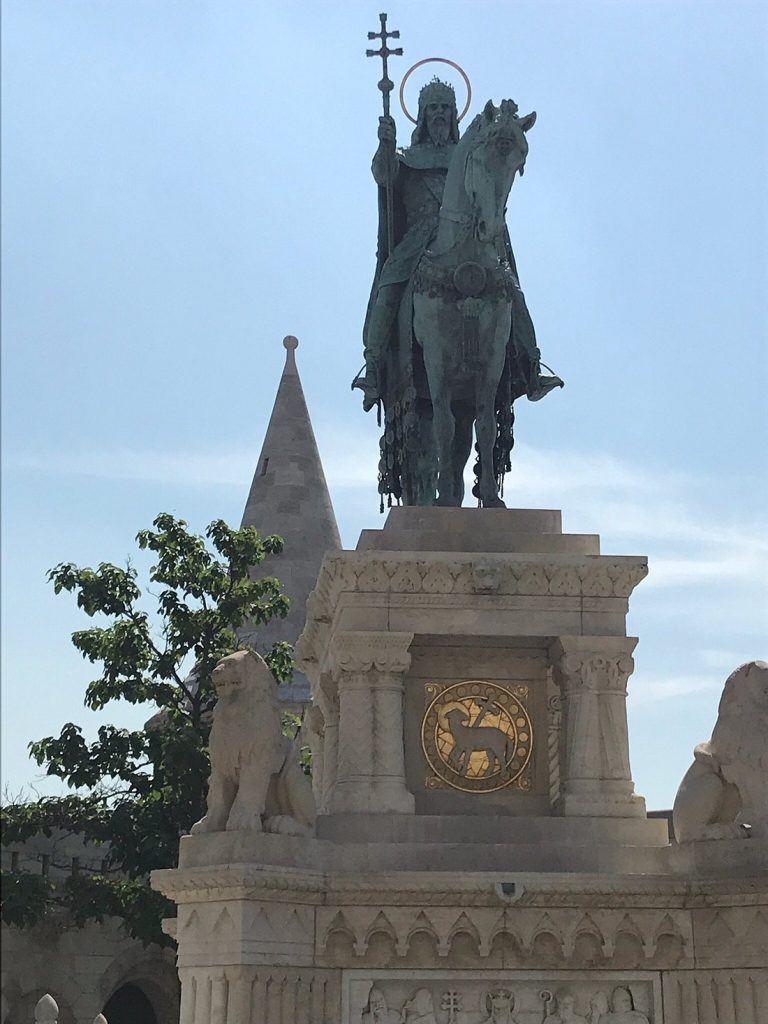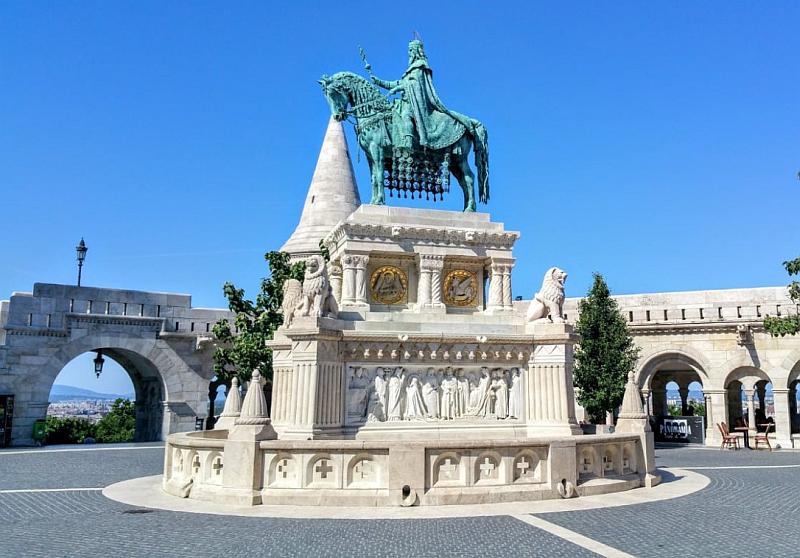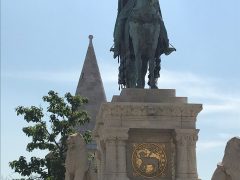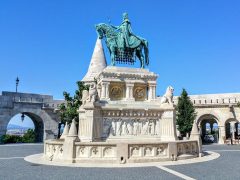Statue of St. Stephen, Budapest: Iconic Tribute to a Nation’s Founder
Tourist Guide Information
Budapest, renowned for its rich history and stunning architecture, is home to many iconic landmarks. One of the most significant is the bronze statue of Szent István, located between the Mátyás-templom and Halászbástya in the Buda Castle district.
History and Details
The statue’s inception began in 1863, proposed by gróf Pállfy Móric, and later, in 1896, Wekerle Sándor was commissioned by the state to oversee its erection. This initiative coincided with the millennial celebration of Hungary’s foundation, which had several commemorations allocated a budget of 5.2 million forints.
The task of sculpting fell upon Stróbl Alajos, starting in 1898 and completing in 1903. This marked his first significant historical commission. The imposing figure of King Stephen, seated on a horse, reaches an impressive height, with the pedestal being 540 cm and the bronze figure an additional 400 cm. The king, donning a crown and draped in a cloak, holds a double cross in his right hand.
Stróbl also crafted the reliefs on the statue’s base, depicting notable events from King Stephen’s reign, including his coronation, legislative acts, and the act of temple building. Interestingly, figures like the architect Schulek Frigyes, the sculptor Stróbl himself, and others can be identified in these reliefs. Particularly notable is the relief portraying Vienna’s submission, where Dr. Karl Luger, the mayor of Vienna, served as a model.
Architectural Notes
While the original plans by architect Schulek Frigyes envisioned a dome sheltering the statue, budgetary constraints led to its omission. However, Schulek’s neo-Romanesque design for the limestone pedestal and its ornate railing, punctuated with columns and lions, were realized.
Above the reliefs, a lavishly decorated cornice showcases golden medallions with embossments of Agnus Dei, symbols of the evangelists, and the double cross.
Location
Visitors can find the statue on the Danube-facing side, nestled between the Halászbástya and Mátyás-templom, providing a perfect backdrop for photographs and quiet contemplation on Hungary’s illustrious past.



